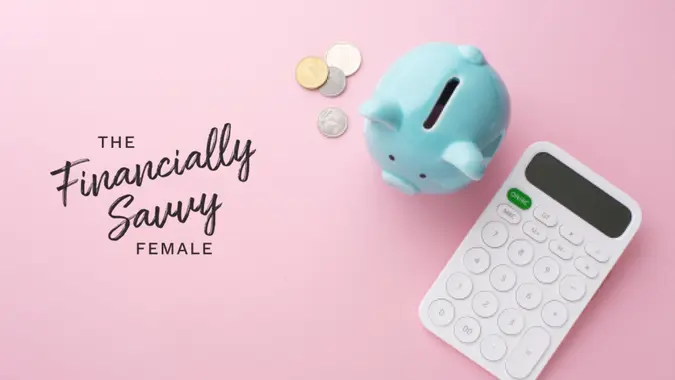10 Mini Financial Challenges To Try This Month

Commitment to Our Readers
GOBankingRates' editorial team is committed to bringing you unbiased reviews and information. We use data-driven methodologies to evaluate financial products and services - our reviews and ratings are not influenced by advertisers. You can read more about our editorial guidelines and our products and services review methodology.

20 Years
Helping You Live Richer

Reviewed
by Experts

Trusted by
Millions of Readers
Saving money doesn’t have to feel like watching paint dry. If your current savings strategy involves staring at your bank account and willing it to grow, it’s time to shake things up. These bite-sized financial challenges turn saving into a game where you actually want to keep playing.
The best part? You don’t need to commit to anything for a whole year. These mini challenges are designed to fit into your life right now without overwhelming your budget or your brain. Pick one that makes you think “I could actually do that” and see what happens.
The Weather Roulette Challenge
Check Wednesday’s high temperature in your city and save that amount in dollars. If it’s 73 degrees, you save $73. If it’s 32 degrees, you save $32. Living somewhere that’s consistently hot? Use the low temperature instead or try a different day of the week.
Why it works: You never know how much you’ll save, which keeps it interesting. Summer months become serious savings mode while winter gives you a break.
Pro tip: If you live in Phoenix in July, maybe switch to the chance of rain percentage or wind speed. Nobody needs a $115 savings requirement just because it’s hot outside.
The Dice Roll Destiny Challenge
Every morning, roll a standard dice and save that amount in dollars. Roll a 3? Save $3. Roll a 6? Save $6. It’s completely random and that’s exactly the point.
Why it works: The randomness removes the mental gymnastics of “Should I save $5 or $10 today?” Your dice decides for you. Over 30 days, you’ll save anywhere from $30 to $180 depending on your luck.
Twist it: Use two dice if you’re feeling ambitious or make it a weekly thing if daily feels like too much.
The ‘Money Mistake’ Penalty Challenge
Every time you catch yourself making an unnecessary purchase — that third coffee of the day; those shoes you don’t really need; the premium gas when regular would work fine — immediately transfer the same amount into savings.
Why it works: It turns spending mistakes into saving wins. You’ll either start making fewer impulse purchases (good) or double your savings every time you mess up (also good).
The psychology: This creates a mental speed bump before purchases. Knowing you’ll have to “pay yourself twice” makes you think harder about whether you really want that thing.
The Birthday Savings Boost Challenge
Every time someone in your life has a birthday — family, friends, coworkers, that acquaintance on social media — save their age in dollars. Your nephew turns 8? Save $8. Your college roommate hits 35? Save $35.
Why it works: Birthdays are scattered throughout the year, so some months you’ll save a little and others you’ll save a lot. It ties your savings to positive events instead of making it feel like a punishment.
Bonus round: Add an extra dollar for each birthday to celebrate your own financial growth.
The ‘Found Money’ Treasure Hunt Challenge
Every piece of physical money you find — in coat pockets, under couch cushions, in old purses or on the ground — goes straight into savings. But here’s the twist: Match whatever you find with an equal amount from your regular funds.
Why it works: It turns cleaning your house and checking pockets into a treasure hunt with real rewards. Found a quarter? That becomes 50 cents in savings.
Extended version: Count gift cards you forgot about, cash back from apps you haven’t used or refunds you weren’t expecting.
The Subscription Audit Challenge
Cancel one subscription this month that you’re not actively using — streaming services, gym memberships, magazine subscriptions, that meditation app you downloaded in January. Save the monthly cost.
Why it works: Most people have at least one subscription they forgot about or rarely use. This forces you to audit your recurring expenses and rewards you immediately with savings.
Reality check: The average person has four to five subscriptions. You’re probably paying for something you don’t even know about.
The ‘Pay Yourself for DIY’ Challenge
Every time you do something yourself instead of paying someone else — make coffee at home, change your car’s air filter, clean your own house, do your own manicure — save the money you would have spent.
Why it works: You’re already doing the work, so you might as well get paid for it (by yourself). This challenge celebrates self-sufficiency while building your savings.
Get creative: Learn a new skill this month specifically to save money. YouTube can teach you almost anything.
The ‘Beat Yesterday’ Challenge
Each day, try to spend less than you did the day before. Whatever you save compared to yesterday goes into your savings account. If you spent $45 yesterday and $38 today, you save $7.
Why it works: It creates a daily game where you’re competing against yourself. Some days you’ll save big, other days just a few dollars, but it all adds up.
Safety net: Set a baseline spending amount for necessities so you’re not skipping meals to win the game.
The ‘Skip One Thing’ Challenge
Each week this month, skip one thing you normally buy — your usual restaurant lunch, weekend movie tickets, that expensive face cream, your regular convenience store stop. Save the money instead.
Why it works: It’s not about permanent deprivation, just temporary consciousness. You might discover you don’t miss some things as much as you thought you would.
Make it fun: Try to find free or cheaper alternatives and see if you actually prefer them.
The Social Media Savings Challenge
Every time you mindlessly scroll through social media for more than 10 minutes, save $5. Check Instagram, TikTok, Facebook or Twitter without a specific purpose? That’s a savings contribution.
Why it works: It makes you conscious of mindless phone habits while building savings. You’ll either reduce screen time (good) or fund your savings account (also good).
Track it: Use your phone’s screen time feature to keep yourself honest.
 Written by
Written by  Edited by
Edited by 

























